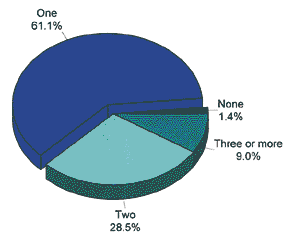by Laura Prigge, AuD
Wideband tympanometry (WBT) is a method of measuring the acoustic-mechanical function of the middle ear using a wideband click stimulus that contains all frequencies from 226-8000 Hz. Grason-Stadler recently released a version of the TympStar Pro that has wideband tympanometry testing capabilities. WBT performs a series of measurements that assists in providing a more comprehensive evaluation of the middle ear. The measurements obtained by using WBT include traditional tympanograms and a graph of middle ear absorbance. The method for WBT is the same as traditional tympanometry; therefore, it is an extremely fast and accurate way to obtain additional diagnostic information about the middle ear.
Absorbance is described as how much sound has traveled through the middle ear system. The results are expressed as a percentage of acoustic energy that has been transmitted or absorbed by the middle ear across the frequencies of the wideband click stimulus. Like other middle ear evaluations, the measurement is taken from the ear canal: the WBT stimulus is automatically adjusted to 85 dB SPL in the ear canal and evaluated during a pressure sweep. The amount of acoustic energy that is transmitted through the middle ear is called absorbance. The amount of acoustic energy measured in the ear canal during the sweep is called reflectance and is the inverse of absorbance.

Dark Green: Reflected Acoustic energy
Light Green: Absorbed Acoustic energy
The results of WBT are displayed in an absorbance graph (shown below). On the x-axis of the graph is the frequency range of the wideband click stimulus. It is important to note that the frequency range of the absorbance graph is the same as the frequency range of standard audiometry. The absorbance graph can be compared to an audiogram of the middle ear. The y-axis of the absorbance graph displays the percentage of the stimulus that was absorbed into the middle ear system. There are normative data available for infants, youth, and adults to assist in the interpretation of WBT.

In addition to the absorbance graph, other results are generated and displayed. It is possible to view single frequency tympanometry tracings. On the TympStar Pro, the single frequency tracings for 226 Hz, 678 Hz, 800 Hz, and 1000 Hz probe tones are automatically generated, and it is possible to select any probe tone contained in the the wideband click stimulus.

The results of WBT also include a new measurement called wideband average tymp (WAT). This result is an average of all the single frequency tympanograms and is displayed as a percentage over a pressure range. The benefit of this measurement is that artifacts due to talking, crying, or movement during the pressure sweep will be averaged out for a more defined tracing. In the example below, there was talking during the sweep that was reduced greatly by averaging.


Implementing WBT has several advantages because of the significant amount of data collected. The top 5 advantages are listed here:
- WBT addresses limitations of traditional tympanometry. For infants and children, fast tracings that include multiple single frequency tracings can save time and struggle.
- The WAT minimizes artifact.
- The absorbance graph provides comprehensive data for deferential diagnosis,
- WBT is sensitive to many common middle ear disorders.
- WBT takes the same amount of time as traditional tympanometry.
Learn more about wideband tympanometry here: https://www.grason-stadler.com/wideband-tympanometry.
Featured image: WideBand Tympanometry – WBT – is available on the GSI TympStar Pro, shown here. Photo: Grason-Stadler





